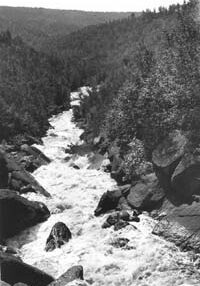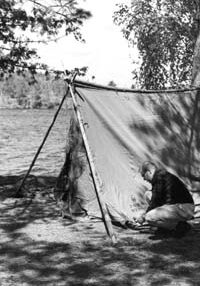Superior National Forest



President Roosevelt established the Superior National Forest from public domain lands, on February 13, 1909. That same year, the province of Ontario established Quetico Provincial Park, adjacent to the Forest. With the passage of the 1911 Weeks Act, the Forest Service gained the authority to purchase private lands, enabling the agency to buy lands to extend the boundaries of the now famous wilderness canoe country.
Arthur Carhart, a recreation engineer with the Forest Service visited the Superior National Forest, and began working to develop the Superior as a recreation resource. In 1921, he authored Recreation Plans: Superior National Forest, submitting the report to district forester Allen S. Peck, for approval. Peck approved the plans on November 8, 1922, setting early recreation standards for the agency.
Carhart's forward suggested that individuals "dealing with forestry problems, timber production and watershed protection recognize the importance of the human use and view it as an inherent value of any forest land." He went on to claim that, "The organization of the recreation resource in our National Forests should not be on the basis of something that is delightful for the people of the country but rather something that is indispensable." Carhart further espoused his philosophical beliefs in wilderness and outdoor recreation, writing: "If we are to have broad-thinking men and women of high mentality, of good physique, and with a true perspective on life we must allow our populace a communion with nature in areas of more or less wilderness conditions."
His published prospectus, An Outline Plan for the Recreational Development of the Superior National Forest, called for creating water-based recreation opportunities. He proposed canoe traffic routes, with portages and camping locations, and outlined a budget to develop 3-5 day loop trails.
In 1926, Secretary of Agriculture William Jardine designated the Superior Roadless Area, in a policy statement, writing, "The purpose of this program is to conserve the value of the Superior National Forest as a game and fish country and as a national playground offering a virile and wholesome form of recreation off the beaten paths...Not less than one thousand square miles containing the best of the lakes and waterways will be kept as wilderness recreation areas."
In an effort to prevent construction of water power plants within the Superior Roadless Area, Congress passed the Shipstead-Newton-Nolan Act in 1930. The act specified timber cutting restrictions, and forbid altering natural water levels. Section 2 of the Act reads, "The principle of conserving the natural beauty of shore lines for recreational use shall apply to all federal lands which border on any boundary lake or stream contiguous to this area... and for the purpose of carrying out this principle, logging of all such shores to a depth of four hundred feet from the natural waterline is hereby forbidden..." Section 3 of the Act provided "that in order to preserve the shore line, beaches and other natural features of the region in an unmodified state of nature, no further alteration of the natural water level of any lake or stream within or bordering upon the designated area shall be granted..."
President Franklin Roosevelt established the Quetico-Superior Committee in 1934, and in 1949, President Truman signed Executive Order 10092, Establishing An Airspace Over Certain Areas of the Superior National Forest in Minnesota. In addition to the Superior Roadless Area, the order also included the Little Indian Sioux and the Caribou Roadless Areas, which were established in 1939.
In 1958, Roadless Primitive Areas of the Superior were renamed Boundary Waters Canoe Area. Language in the 1964 Wilderness Act included the Boundary Waters Canoe Area, although the Area wasn't officially classified as Wilderness until 1978.
Sources:
Carhart, Arthur. "Recreation Plans: Superior National Forest" (1922), pp. 2-4.Unpublished report with accompanying photographs.
Chapman, Herman H. "A Historic Record of Development of the Quetico-Superior Wilderness Area and the Chippewa National Forest" (1961).
Jardine, William. "The Policy of the Department of Agriculture in Relation to Road Building and Recreational Use of the Superior National Forest, Minnesota." (September 17, 1926.)
Neff, Larry. "Milestones of the Boundary Waters." A two-page chronology prepared in 1965 for Superior National Forest employees.
Compiled by Carol Severance, historian.

